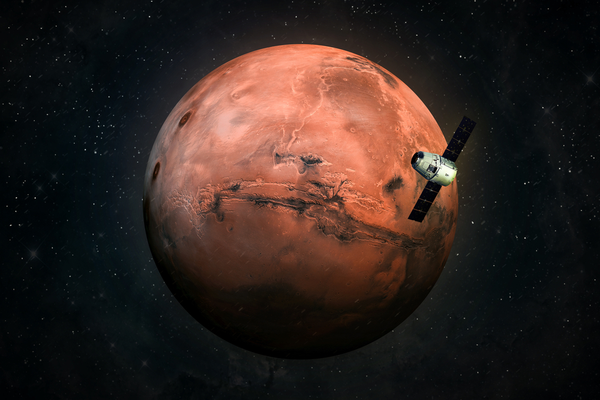Scientists Discover What Appears to be Water Beneath the Surface of Mars

Scientists from ESA’s Mars Express announced Wednesday they had discovered what appears to be a body of salty, liquid water beneath the surface of Mars, raising the possibility of detecting life on the Red Planet.
We know from orbiters, landers & rovers that #Mars had a wet past, with its vast dried out river channels & minerals that can only form in liquid #water, but it is not stable on the surface anymore, so scientists are looking underground… pic.twitter.com/GBp8R8PSUE
— ESA Science (@esascience) 25 de julio de 2018
The reservoir, spanning about 20 kilometers in diameter under ice on the planet’s southern pole, was found through a radar instrument on the Mars Express Orbiter, which was launched in 2003.
The #Mars Express radar investigation finds a subsurface feature spanning about 20km across under a 1.5km thick layer of ice & dust, interpreted as a buried pond of liquid water, which could be laden with salty, water-saturated sediments… pic.twitter.com/cjTSG9Cv9Q
— ESA Science (@esascience) 25 de julio de 2018
Researchers previously discovered signs that water once flowed on Mars.
“It’s tempting to think that this is the first candidate place where life could persist [on Mars],” said Roberto Orosei, a professor with the Italian National Institute for Astrophysics. He led the research published in the journal Science. He also said Mars may contain hidden bodies of water that have yet to be discovered.
Orosei said the size of the reservoir “really qualifies this as a body of water,” like a lake, and not like “some kind of melt water filling some space between rock and ice.”
The scientists from the European Space Agency say the discovery gives them a roadmap to potentially finding life under the surface.
“We are not closer to actually detecting life,” said Dr. Manish Patel, an astrobiologist at Britain’s Open University, in comments published by the BBC. “What this finding does is give us the location of where to look on Mars. It is like a treasure map – except in this case, there will be lots of ‘X’s marking the spots.”
Maybe there are more of these hidden pools of #water?! This exciting discovery will contribute to our understanding of the evolution of #Mars, the history of water on our neighbour planet and its habitability potential. Full story:
https://t.co/RC8QSxvBwe
— ESA Science (@esascience) 25 de julio de 2018
Mars is cold, barren and dry, but used to be warm and wet. The researchers say the water in the lake might have been kept from freezing due to a high concentration of salt. One scientist who was not involved with the study said microorganisms have been able to survive in similar conditions on Earth.
With information from VOA News and The European Space Agency ESA.
